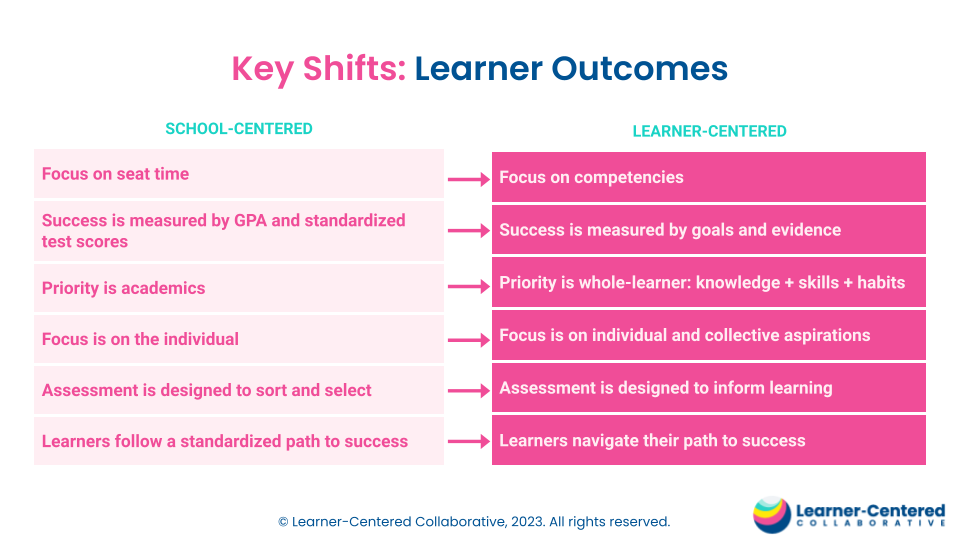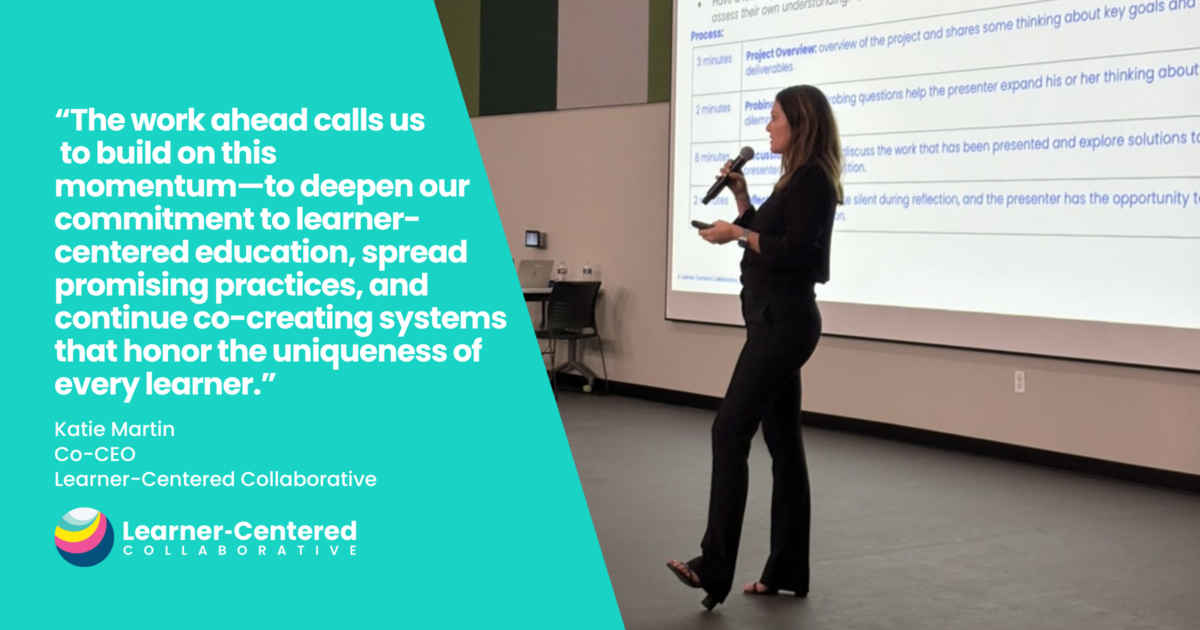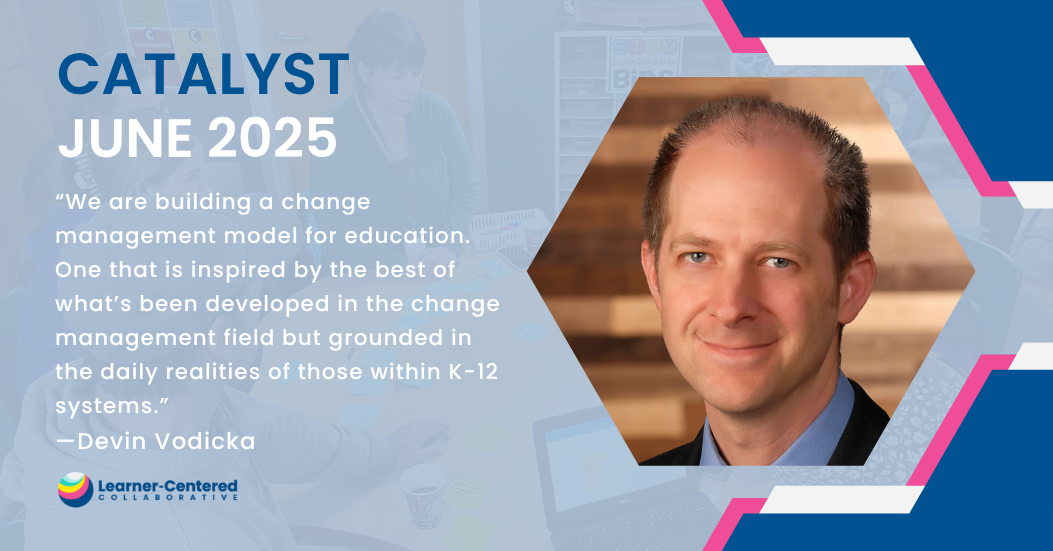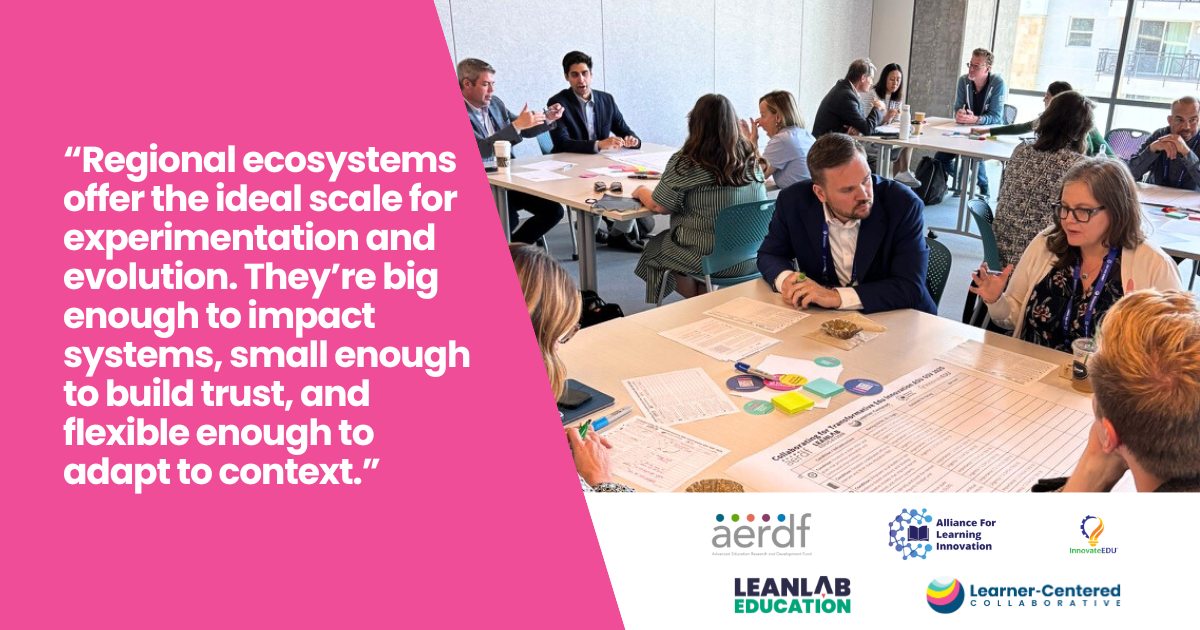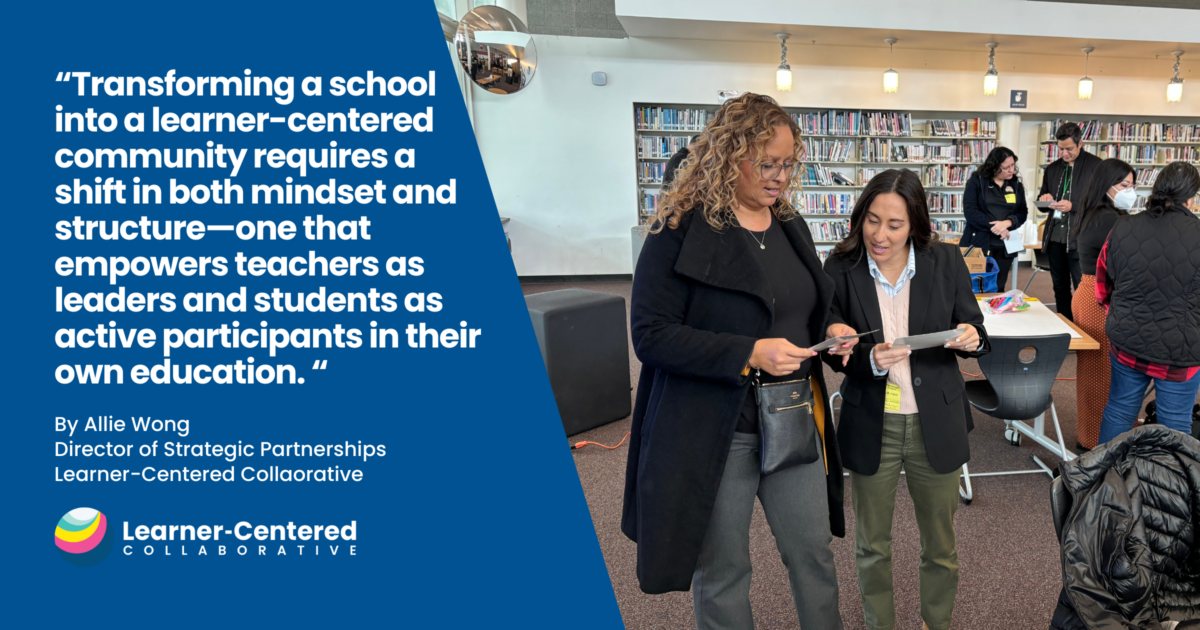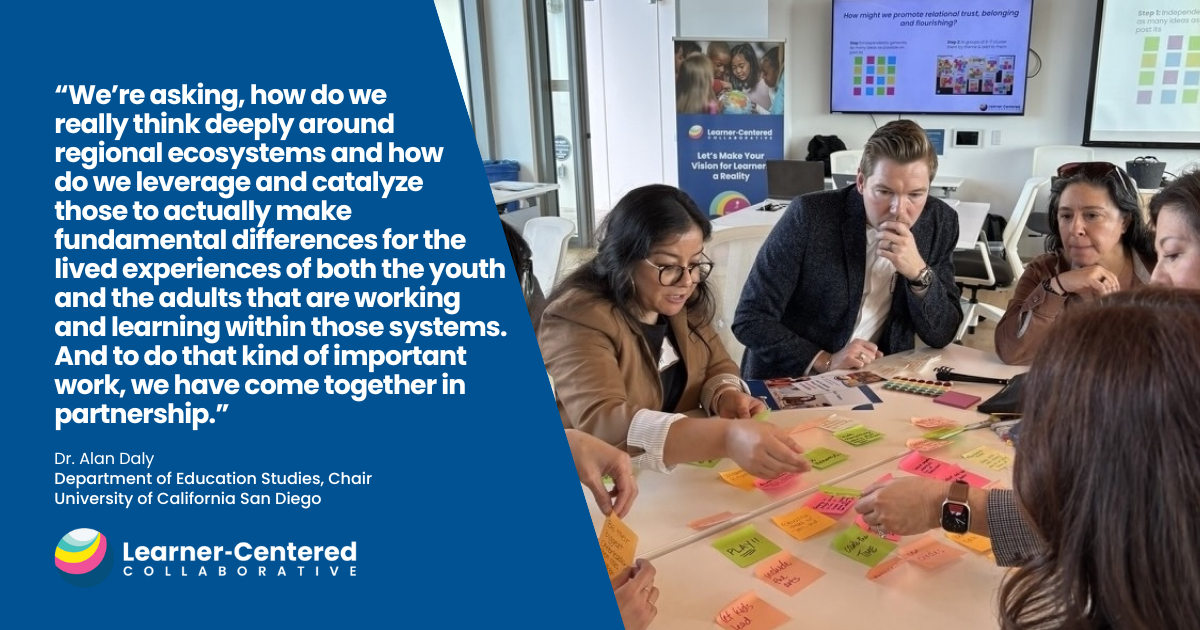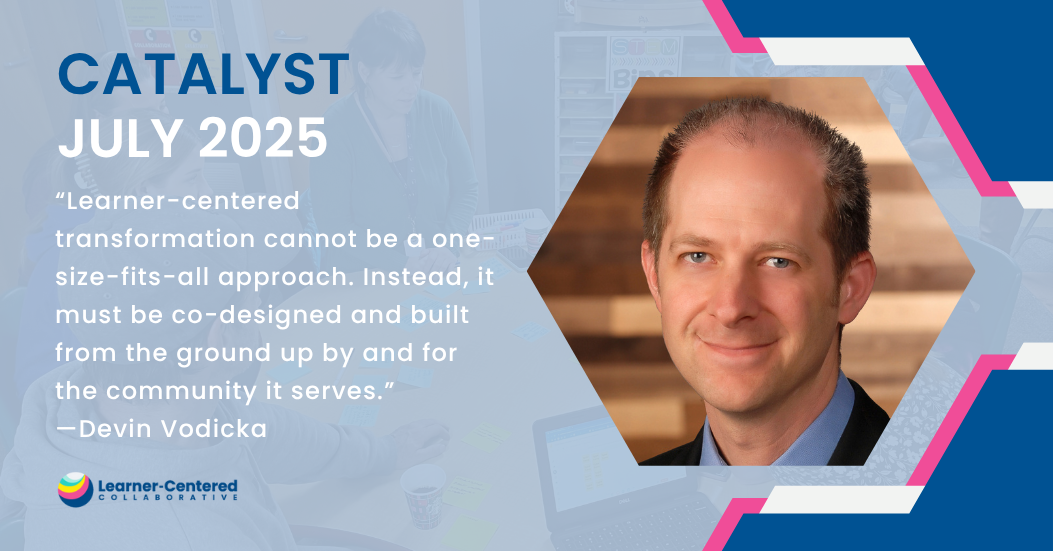Building a Guiding Coalition for School Innovation
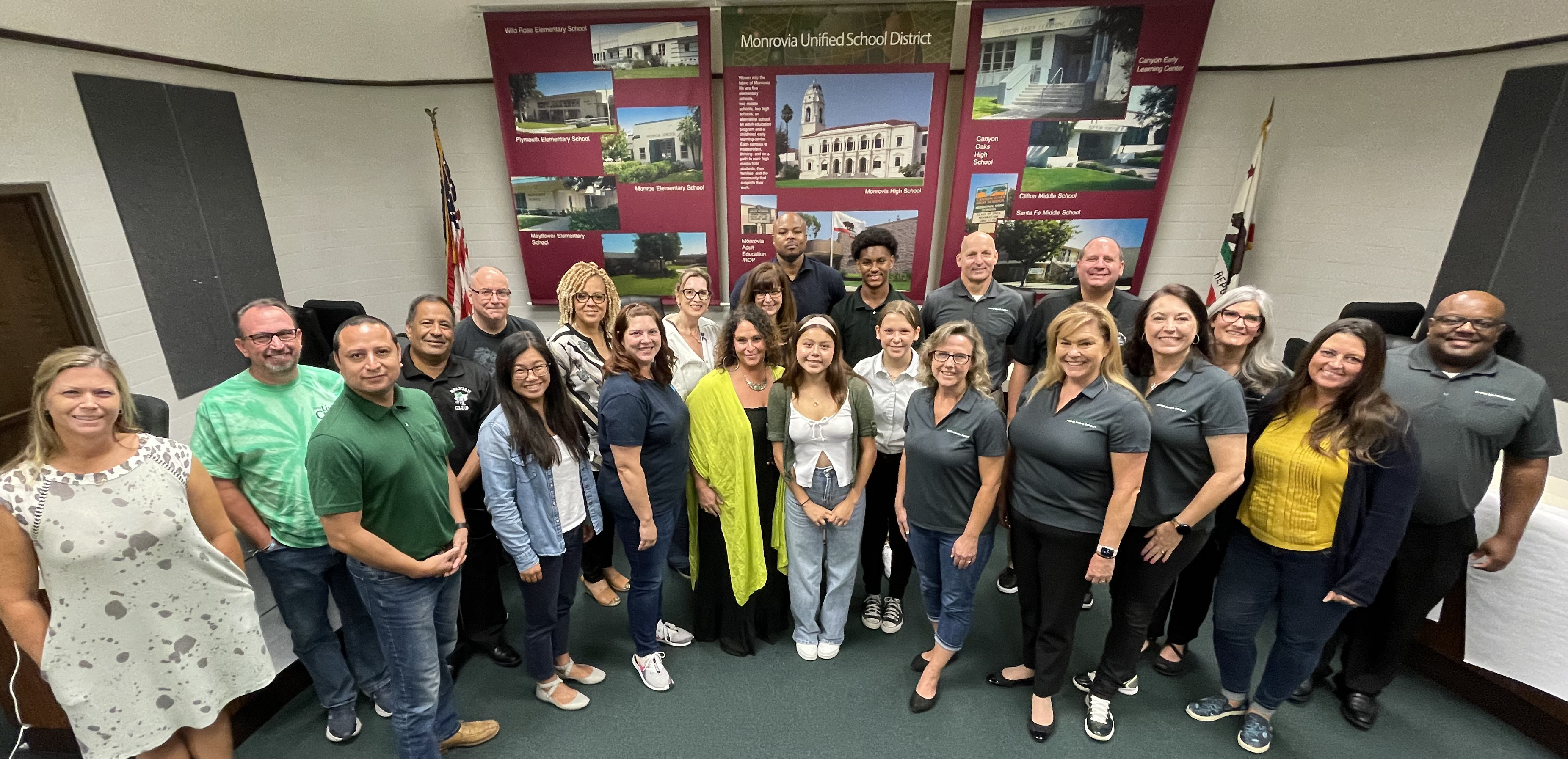
“Invite everyone who cares to work on what’s possible.”
– Margaret Wheatley
As a former school leader, this concept was always front and center as we worked to innovate and create the best possible experiences for our students and community. Creating learner-centered schools requires that we (teachers, students, families, community, and other educational partners) evaluate our educational systems and policy, define broader measures of student success and create strategic plans that guide such transformation. This work requires a significant investment in time to learn, belief about what is possible, and an unwavering dedication to create schools where ALL students are known, loved and equipped to succeed not only in school but in a world that continues to evolve rapidly. This new way of schooling will require the following shifts:
These shifts are no small task; they are an evolution, in many cases a revolution! A journey such as this will demand that schools and districts commit to working interdependently and collaboratively. The formation of a Guiding Coalition (GC) is a critical move to create the conditions for success.
What Is a Guiding Coalition?
A guiding coalition is a group of diverse stakeholders who believe deeply in a vision of success for all students. Guiding coalitions are essential to implementing innovation as they are often responsible for crafting change, fostering collaboration, communicating progress and ensuring the school community is both seen and heard. At LCC, we believe the Guiding Coalition enables the system to anchor on a North Star, create clear metrics of success, define the learning, enable instructional staff and ultimately grow learner-centered practices and results.
Recruiting a Guiding Coalition
If you have worked in education for some time, you have likely had experience with change initiatives, both positive and negative. To avoid false starts and obstacles, you must intentionally seek out those who have the most diverse perspectives. You need to recruit with passion, clear expectations, and a desire to truly grow your community through this collaborative process. Do not fall into a “whoever says yes” approach as you will lose tremendous perspective from those whom the system is failing or those that have never been invited to the conversation. And you must balance that with finding those that have a deep commitment and interest in the work you are proposing. We recommend that you seek out members that bring both diversity of perspective and depth of experience. In the article, School Improvement for All, Kramer and Schuhl recommend the following characteristics:
- An eagerness to promote change
- Expertise relevant to the tasks on hand
- High credibility with stakeholders
- Proven leadership skills
“Do not fall into a ‘whoever says yes’ approach as you will lose tremendous perspective from those whom the system is failing or those that have never been invited to the conversation.”
Leveraging the characteristics above, your membership must include the superintendent and/or principal in addition to the following representatives:
- Students (enough to ensure their voices/perspectives are considered when working in small groups)
- Other significant functions of your district/school, such as special education, food services, purchasing, curriculum and instruction, etc.
- Bargaining units
- Parent and staff advisory groups
- Community partners (local colleges, chamber of commerce, city council, etc)
- School Board members
As you are forming your group, keep this question in mind “Do we have enough diversity within this group that we can guide and influence the entire school/district?” If yes, then get started!! If no, keep asking for support in the areas that are underrepresented.
Engaging and Sustaining a Guiding Coalition
 After recruitment, create clear expectations for participation (what are they getting into), and have defined meeting norms, an actionable timeline, agendas that model learner-centered practices, and snacks (I know, such a simple yet effective tool). These design elements will help your members prioritize meeting time and engage with their full beings. Each meeting should include connections and opportunities to grow in community plus open discussions about the desired outcomes, regular check-ins on progress and ongoing ideas for moving the work forward. Create a compelling theory for change that grounds the group and creates guardrails for where you are going.
After recruitment, create clear expectations for participation (what are they getting into), and have defined meeting norms, an actionable timeline, agendas that model learner-centered practices, and snacks (I know, such a simple yet effective tool). These design elements will help your members prioritize meeting time and engage with their full beings. Each meeting should include connections and opportunities to grow in community plus open discussions about the desired outcomes, regular check-ins on progress and ongoing ideas for moving the work forward. Create a compelling theory for change that grounds the group and creates guardrails for where you are going.
Celebrating progress
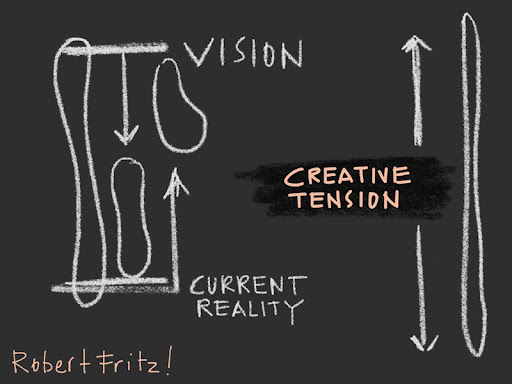 Document the journey, track your progress, and celebrate successes along the way (see how one of our partners leveraged a google site to share their work). Telling your story of change and leveraging transparency in the process, builds trust and orients your community to the future.
Document the journey, track your progress, and celebrate successes along the way (see how one of our partners leveraged a google site to share their work). Telling your story of change and leveraging transparency in the process, builds trust and orients your community to the future.
Most importantly, embrace the creative tension and the journey. Our current system was not created in a day, a year or a decade. Your Guiding Coalition will need support, encouragement, and time to help your system move closer and closer to education ecosystems that empower all learners to know who they are, thrive in community, and actively engage in the world as their best selves.
Let’s talk about moving your vision forward. We support your guiding coalition with design, facilitation, guidance, models and more so you can fully engage in the process and product.
